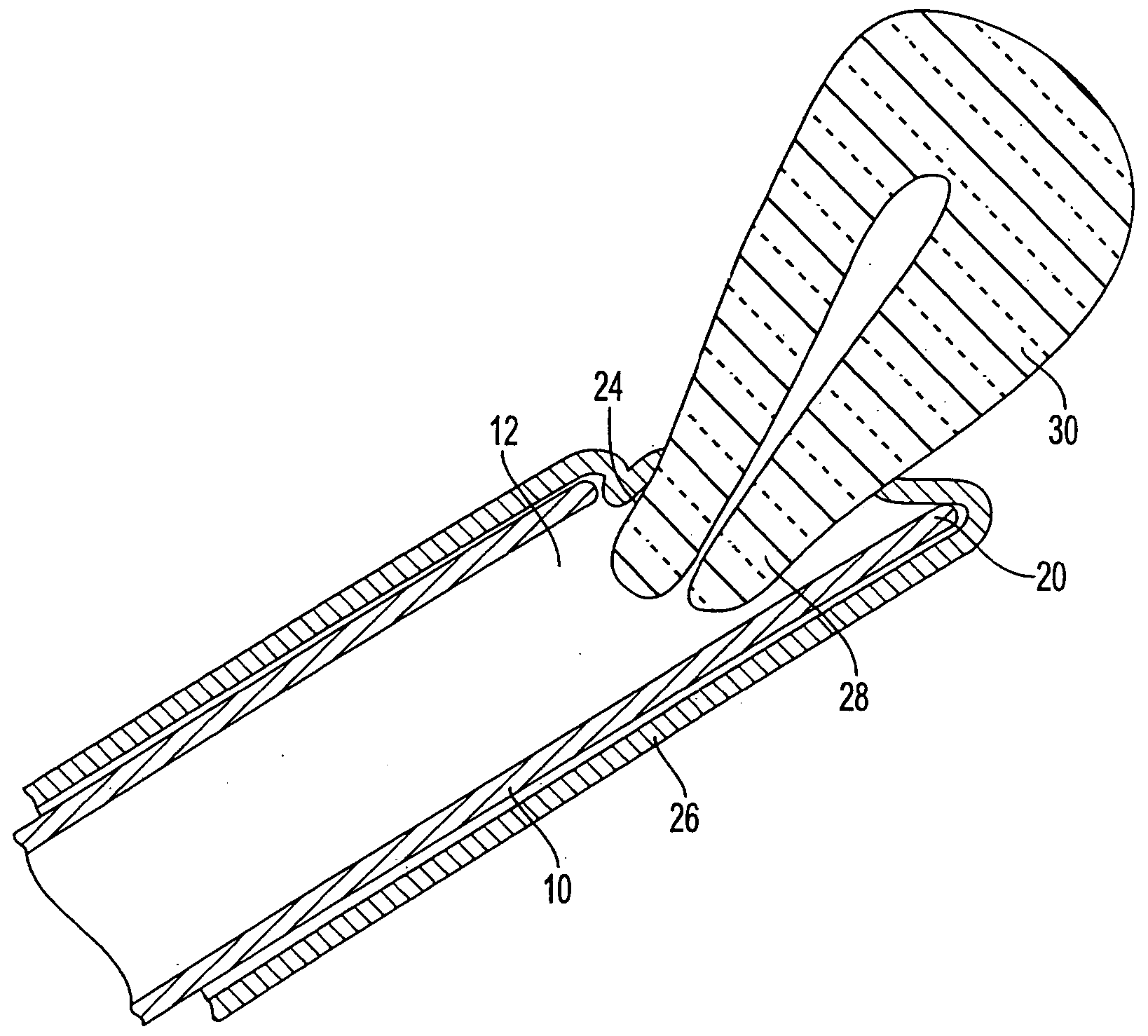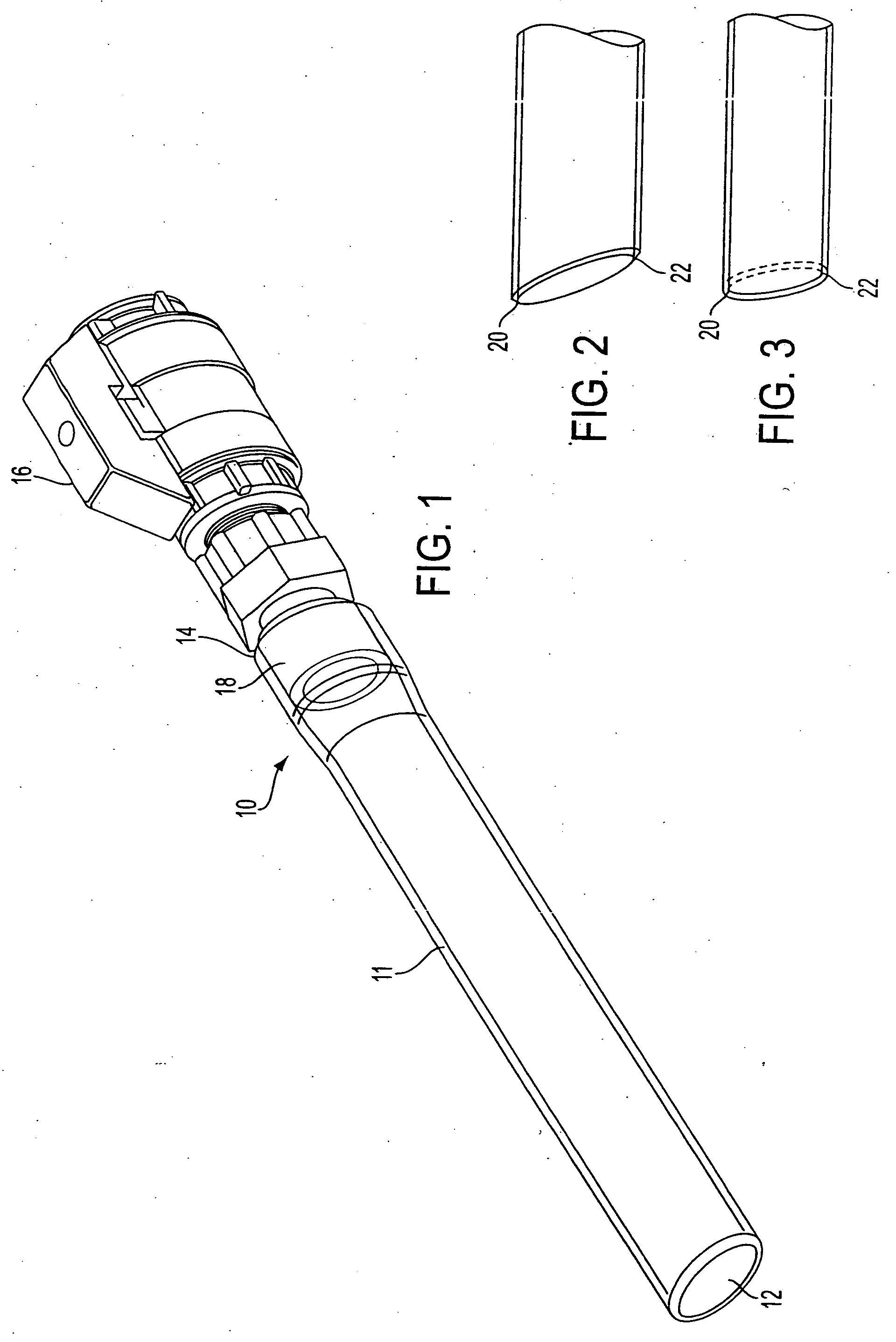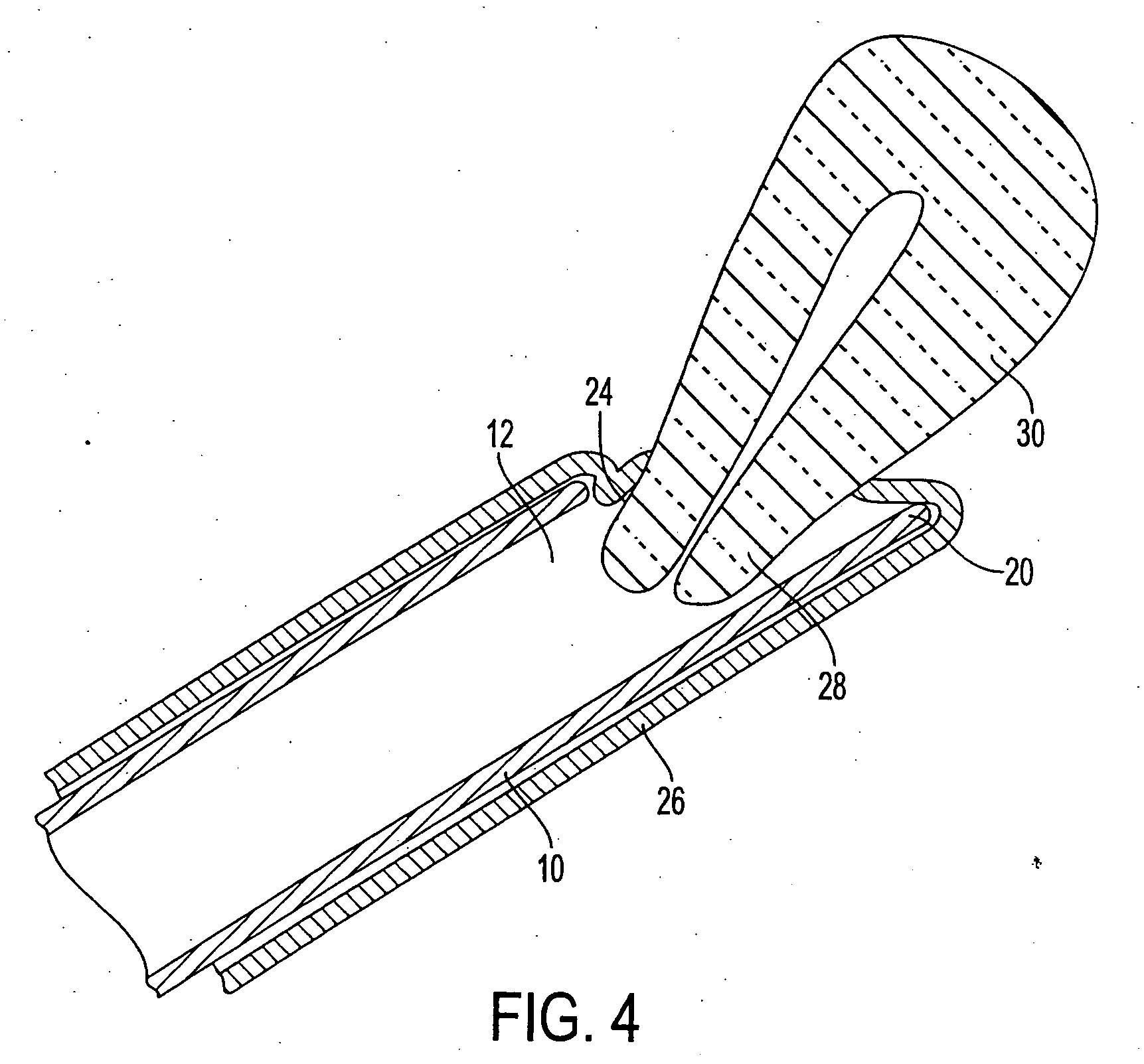Transvaginal tube as an aid to laparoscopic surgery
a technology of transvaginal tube and laparoscopic surgery, which is applied in the field of transvaginal tube, can solve the problems of increasing the operative time of laparoscopic surgery, fiddly use, and difficulty in pulling out of the abdominal por
- Summary
- Abstract
- Description
- Claims
- Application Information
AI Technical Summary
Benefits of technology
Problems solved by technology
Method used
Image
Examples
example 1
[0056] A tube 10, 110 made of firm or flexible smooth transparent plastic, with a valve 16, 116 mounted at one end, is sterilised in preparation for gynaecological laparoscopic surgery. When the patient is anaesthetised, positioned, cleansed and draped according to local custom, the tube is passed through the female vagina. The proximal end 12, 112 of the tube circumscribes the cervix from the vagina as depicted in FIG. 4. The tube is removed to allow the uterus and appendages to be exteriorised, following which the tube is replaced and the proximal end of the tube is intraperitoneal. The distal end 14, 114 is closed with a valve or headpiece 16, 116 and the pneumoperitoneum is maintained. No other device is needed to maintain the pneumoperitoneum but the tube is secured in place. Any fixation is acceptable but it is usually held by an assistant surgeon or one end is rested on a table. The tube is positioned according to need.
[0057] The proximal end of the tube when located intra-a...
example 2
[0059] The tube was sterilised with ethylene oxide gas. However, it will be appreciated that any method of sterilisation may be employed to sterilise the apparatus.
[0060] The first steps of a true laparoscopic hysterectomy are to secure and divide the ovarian, uterine and cervical branch of the uterine artery and reflect the bladder. The uterus is separated from the vagina and its uterosacral ligaments using the tube. The tube diameter depends on the patient. A 5 cm diameter tube is ideal for multiparous and overweight women but a smaller 4 or 3.5 cm diameter tube is needed for postmenopausal and nulliparous women to make it fit the vagina. It is inserted through the introitus and advanced to the cervix. This elevates and defines the cervicovaginal junction and further bladder mobilisation can be performed at this stage if more vagina exposure is necessary. The tube position also facilitates identification of the uterine vessels for a safe point for electrocoagulation or suture occ...
example 3
[0065] Use of the transvaginal tube as an aid to bladder neck surgery.
[0066] At either open or laparoscopic surgery, designed to elevate the bladder neck for treatment of stress incontinence of urine in the female, by either the Birch, Cato-Murray or similar procedure, the transvaginal tube previously described can also be used without the valve at the distal end to enhance bladder neck surgery. The tube may be any length from 5 cms to 35 cm in length, made of the same clear, rigid or semi-rigid plastic as previously described.
[0067] At that time in the procedure when the para-vesical area is being prepared to expose the lateral vaginal fornices, the tube is inserted with a telescope, either a direct (0 degrees) or a forward oblique type for example, with a 30 degree angle.
[0068] The tube acts to expand the vaginal walls, particularly the vaginal fornices so that they are made more prominent and fixed so that definite identification from either the open procedure or the retro-per...
PUM
 Login to View More
Login to View More Abstract
Description
Claims
Application Information
 Login to View More
Login to View More - R&D
- Intellectual Property
- Life Sciences
- Materials
- Tech Scout
- Unparalleled Data Quality
- Higher Quality Content
- 60% Fewer Hallucinations
Browse by: Latest US Patents, China's latest patents, Technical Efficacy Thesaurus, Application Domain, Technology Topic, Popular Technical Reports.
© 2025 PatSnap. All rights reserved.Legal|Privacy policy|Modern Slavery Act Transparency Statement|Sitemap|About US| Contact US: help@patsnap.com



